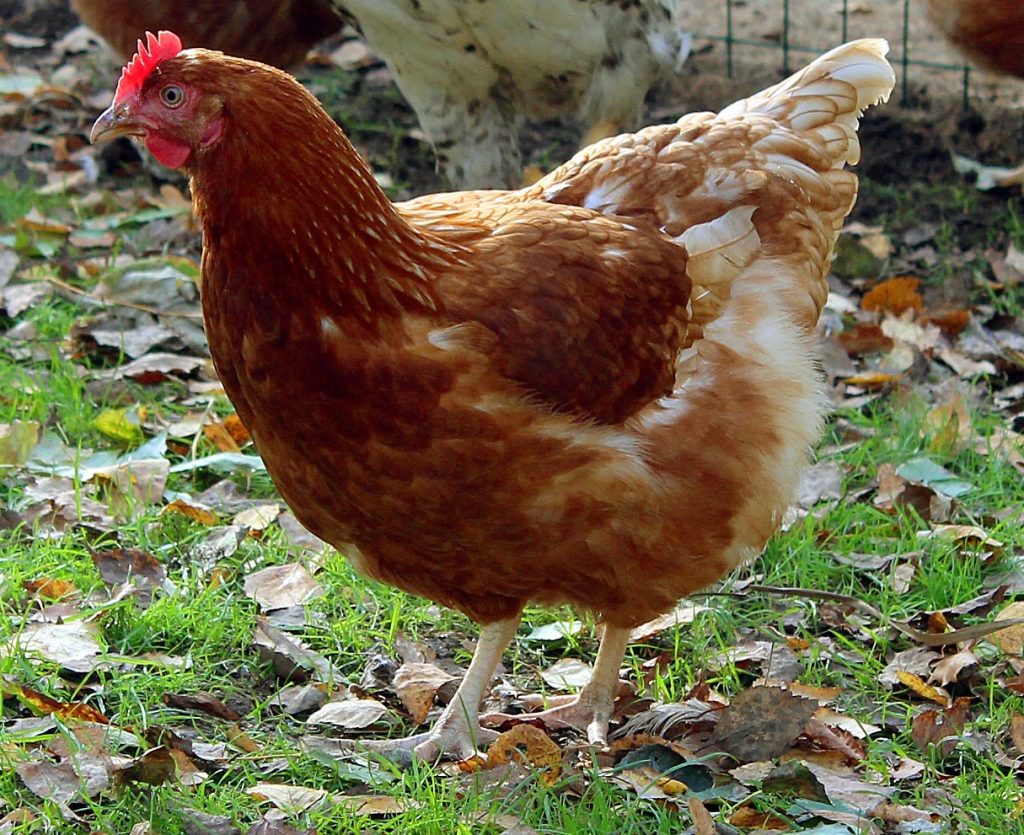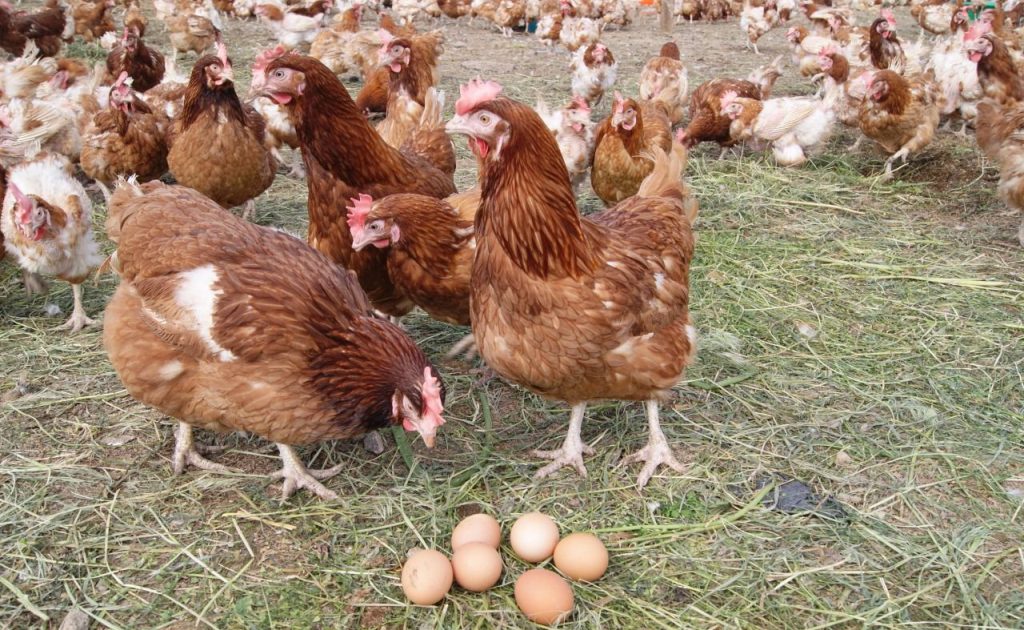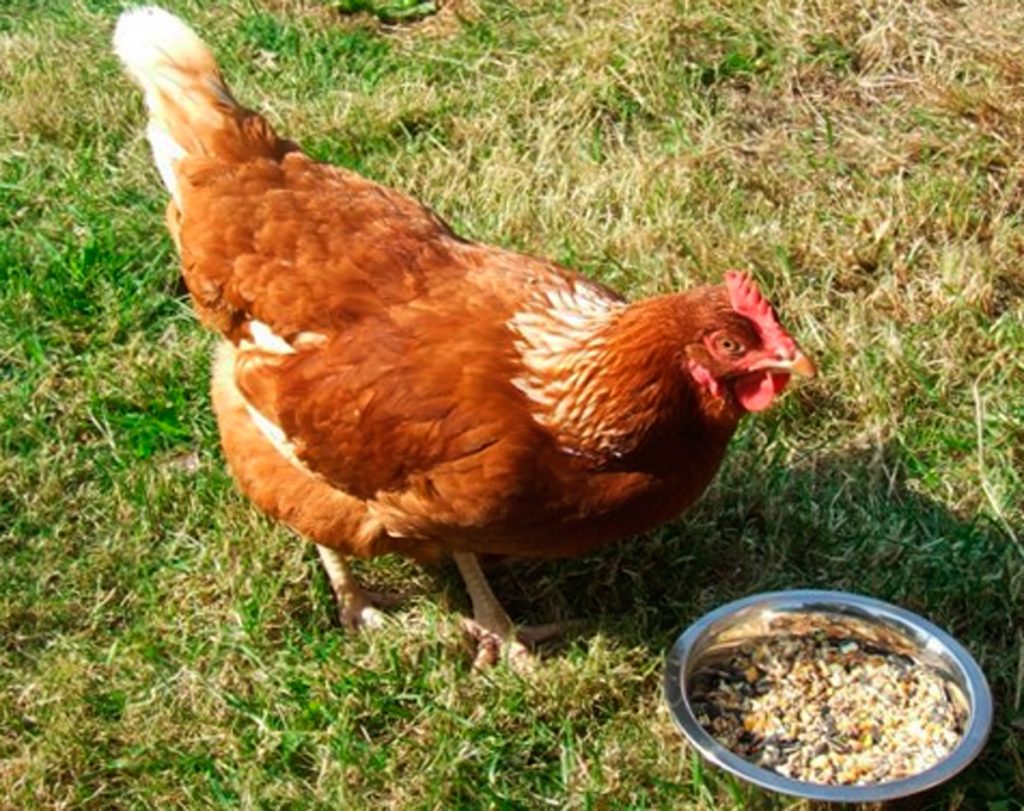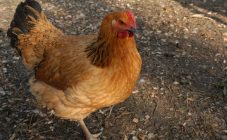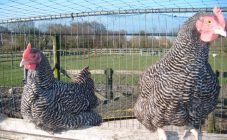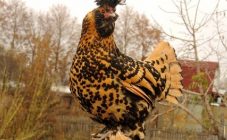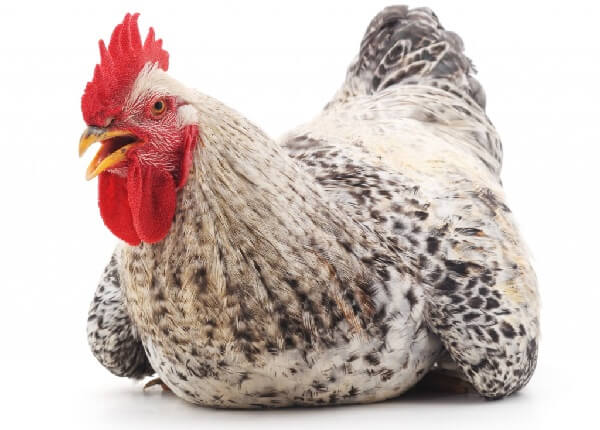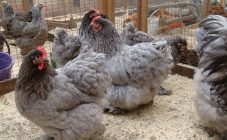Content:
One of the main tasks of breeders who are engaged in breeding new breeds of poultry is to increase their productivity. In the process of selection, several different breeds are crossed, resulting in hybrids - crosses, which in translation from English means "intersection".
The crosses are popular among poultry farmers due to their characteristics: they quickly gain weight, have a high survival rate, and easily get used to new owners and living conditions.
Loman Brown chickens are one of the most popular crosses, which experts attribute to the meat-and-ovarian species, but poultry farmers most often breed these individuals because of their high egg productivity.
General information about the breed
Brown chickens were bred in Germany by specialist breeders from Lohmann Tierzucht GmbH. Since the breed is a cross, it will not be possible to get a livestock that fully possesses maternal characteristics at home. All crosses are brought out in an industrial environment under the supervision of specialists. The scientific approach to breeding a new breed has borne fruit - Loman Brown is still one of the best breeds in terms of egg production today. The manufacturer of the Loman Brown chicken breed does not reveal the secrets of its breeding, therefore, hatching eggs and mother stock can only be ordered in Germany.
It is only known that when breeding this cross, the breeders used 4 hybrids, and in the process of crossing, Brown chickens were obtained, in which the sex of the chicks can be determined in the first days after birth. Already in diurnal young animals, the down of females is red with a brown tint, and in males it is yellow. Laying hens are distinguished by high egg production, which is why they are so popular with breeders of this type of poultry - it is beneficial to keep it not only in large poultry farms, but also in small private farms.
This variety was bred in the 70s of the last century, since then many new breeds with good egg production have been bred, but Loman Brown chickens are still considered one of the best laying hens.
In total, there are 4 official varieties of this cross:
- Loman Brown is a classic;
- Loman Brown Light;
- Loman Brown extra;
- Lohman Tradition.
These hybrids differ in egg size and some other characteristics. There is also another hybrid of Lomanov - Loman White chickens, the description of which overlaps with the description of the Brown crosses. Their main difference is the color of the plumage: for Lomanov White, it is always boiling white.
Characteristics and description of the breed
These chickens with brown plumage look elegant, attracting everyone's attention. Despite their relatively small size and growth, it is profitable to keep them due to the high productivity of layers. But first, you should tell about the main differences of this cross:
- the plumage of these individuals can be brown or white, this is due to which gene the offspring inherited - maternal or paternal. Most often, males are white, and chickens are brown with a red tint;
- Loman Brown's physique is strong, the chest is wide, and the stomach is flat;
- the wings are well developed, of medium size, tightly attached to the body;
- on the small head, bright red ridge and small lobes are clearly visible;
- plumage is quite thick and dense;
- limbs - long, strong, their color is yellow;
- the tail is well developed.
The mass of adult males can reach 3-3.5 kg.Females are smaller, their live weight reaches 2.5 kg. These birds continue to grow up to 5-5.5 months. Egg production is high - a hen can lay 300-320 eggs per year. Eggs are large, weighing up to 65 g, but pullets may be slightly smaller. The shell is strong, white or brown.
Individuals are rather early maturing and pullets can begin to rush as early as 5 months. But the maximum productivity of laying hens continues for about 78-80 weeks (up to about one and a half years), and then egg production begins to decline sharply. Further maintenance of this egg-laying breed becomes economically unprofitable, therefore the herd at this age is completely replaced.
All varieties of Loman Brown are distinguished by a calm disposition, high resistance to stressful situations, they get along well with representatives of other breeds in a chicken coop. And one more positive difference - the laying hens' egg production does not decrease due to stress. These crosses are not shy, they themselves are almost always quiet. And males do not fight with other roosters, dividing the territory, because they are peaceful.
Breeding features of the breed
Growing these chickens does not cause much trouble, and they can be kept in the household, either in cages or just in a chicken coop. When outdoor maintenance, one should not forget about arranging a place for them to walk. Although this hybrid is unpretentious in terms of keeping, some rules must be followed to create optimal conditions for these birds.
The main thing is to maintain the temperature regime throughout the year, as well as a certain humidity in the poultry house. The most optimal temperature regime is 16-17 ° С, and humidity is 60-65%. Although Loman Brown chickens are fairly cold-tolerant, the house should be heated to maintain egg production during the winter.
The house needs to be insulated before winter. It is also necessary to ensure that there are no cracks in the bird house. When kept outdoors, drafts are dangerous for poultry - they can get sick.
Also, during the autumn-winter period, you should take care of sufficient lighting in the chicken coop. In summer, these individuals are outdoors almost all day, so they have enough sunlight. In winter, additional lighting should be installed in the room, otherwise egg production begins to drop in layers. The duration of daylight hours during this period should be 12-14 hours.
To make the chickens comfortable when kept on the floor, care should be taken that the floor is not damp. To do this, it should be raised above the ground by 0.3-0.5 m. Wood sawdust or straw is laid on the plank floor. The thickness of this bedding should be at least 20 cm. The bedding is changed every week.
Also in the hen house there must be perches on which the chickens spend the night, nests (normally there should be one nest for every 3 layers), drinkers and feeders.
The water in the drinking bowls must be clean, so it is changed as it gets dirty, but at least once a day.
In general, caring for chickens of this breed is simple. It should not be forgotten that this cross is prone to obesity, which has a bad effect on the productivity of layers. Therefore, this bird should not be overfed. There should always be as much food in the feeders as they can eat at one time.
Breed advantages and disadvantages
The main positive qualities of this hybrid include:
- early maturity of the breed - pullets begin to rush from 4-4.5 months;
- unpretentiousness to conditions of detention;
- high survival rate - up to 98%;
- this egg-laying breed is more cost effective than other members of this type.
However, this breed has its drawbacks.These may include a relatively short period of productivity of laying hens - after about a year and a half, hens reduce egg production, as a result, it is necessary to completely renew the herd. It is also worth noting that it is extremely difficult to get full-fledged offspring at home, so you have to spend money on the purchase of young animals or hatching eggs quite often.
And yet, Loman Brown chickens have remained one of the most popular egg breeds for many decades. Therefore, if farmers decide to breed chickens in order to get a large number of eggs, they will not find these crosses better. In addition, when replacing the herd, poultry farmers receive a sufficient amount of tasty tender dietary meat.
